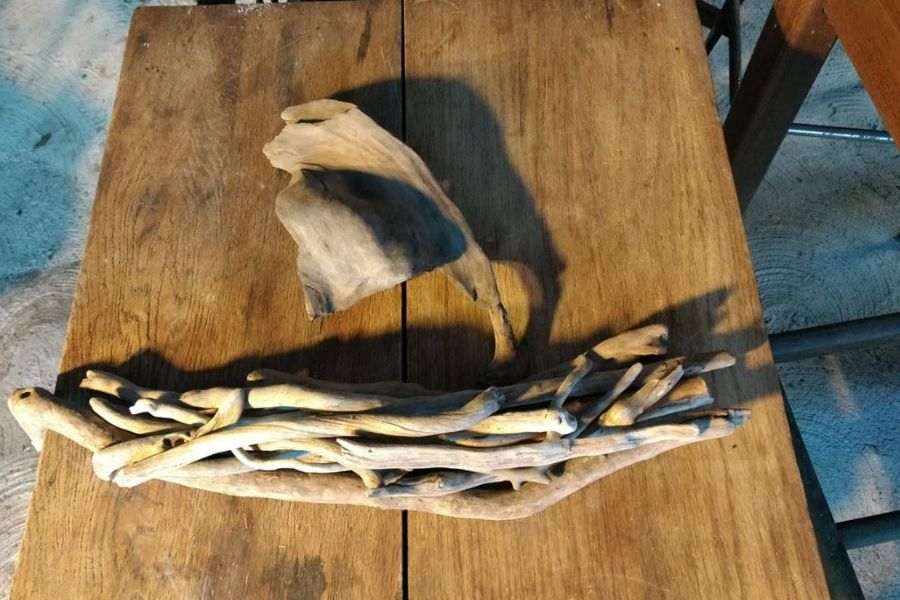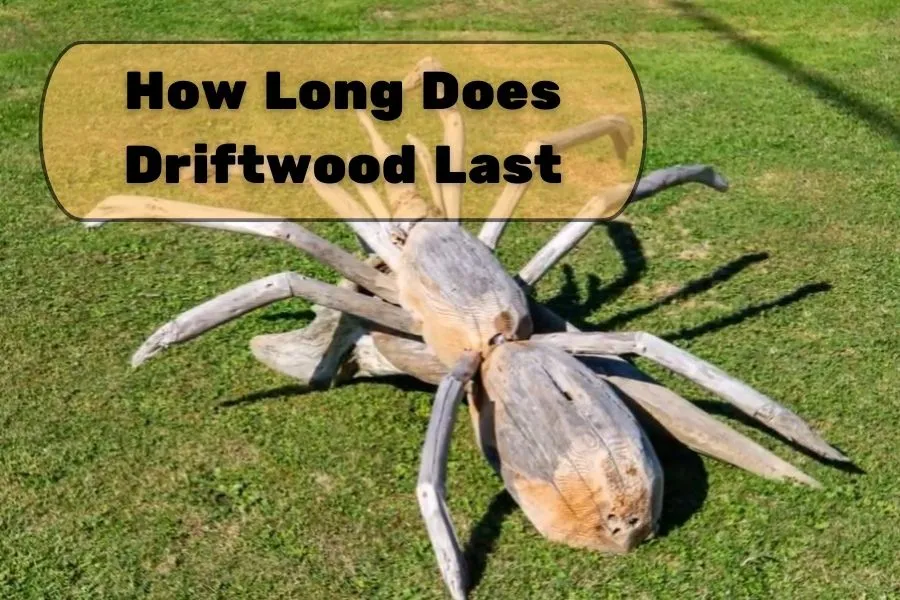If you spend lots of time at the beach, lakes, or rivers, you have probably come across those pieces of washed-up wood. This is nothing other than driftwood; they wash up due to waves, tides, or strong winds. Driftwood is incredibly popular in at-home aquariums, as its old and rustic look can be pleasing to the eye. How long does driftwood last?
Driftwood could last for up to a decade if it’s properly maintained. Driftwood will show signs of deterioration after about three to five years if it is constantly emerged. Cheap driftwood will decompose sooner; you may need to replace it every five years, as it could affect your aquarium fish.

Knowing how long your beautiful piece of driftwood will last could help you significantly. Continue reading with us as we go through the deterioration of driftwood and what you can do to prolong its life in your aquarium as much as possible.
The Deterioration Of Driftwood
Just like any other type of wood, driftwood is organic, which means it will break down over time. Driftwood will start to rot as fungi and bacteria colonizes its surface, eating away at the organic material.
This will eventually lead to the material deterioration, and several factors could determine how long it takes, including the temperature and how long it has been in the water. Rot will require two primary things; humidity and air.
If a piece of driftwood has been properly treated and prepared, it could last for an indefinite time if used as a decoration in a cool and dry place.

However, its deterioration becomes inevitable when a piece of driftwood is used in an aquarium, as it will remain submerged.
On average, most driftwood pieces will show signs of deterioration as early as two years after submerging. It will need to be replaced after approximately five years.
READ MORE: How Do I Know If My Aquarium Driftwood Is Safe
Signs That Your Driftwood Is Deteriorating
As a piece of driftwood becomes closer to the end of its life, the exterior of the wood will start to feel soft to the touch. As the deterioration progresses, the exterior wood pieces will start to fall away and look like muddy, fluffy debris.
You’ll most likely notice the debris build-up on the substrate of your aquarium, and it will look very similar to fish waste. If the piece of driftwood deteriorated more, it could be sucked up by the filter of your aquarium, which could result in clogging of the mechanical media with brown or dark brown mud.
If the rate of deterioration of your driftwood is quick, it could make it difficult to maintain your aquarium and its filter. If you notice all these signs, it is most likely time to replace the piece of driftwood in your aquarium.
It may seem unfortunate, as you may have handpicked the piece. Still, it provides an excellent opportunity to redecorate your tank and try something new, whether it’s another unique piece of driftwood or something more permanent and long-lasting.
How To Prolong Driftwood’s Lifetime
Depending on your piece of driftwood, you can use several methods to prevent the deterioration process for as long as possible.
There are a few steps involved to prevent driftwood from rotting, but if you follow them as closely as possible, your driftwood will remain safe for your aquarium for as long as possible:
Step 1: Thoroughly Clean Your Driftwood After Obtaining
Any piece of driftwood you have obtained, whether at a lake, river, or ocean, should be inspected and sterilized. Make sure to remove any sharp or loose edges from the piece of wood and clean it under a running stream of water.
If you notice any live insects, you can seal your piece of driftwood in an airtight or plastic bag and leave it sealed for a few days. You also can apply an insecticide to the driftwood, although this is not recommended if you plan to use the driftwood in your aquarium.
There are a few ways to clean your driftwood effectively, and you most likely already have these things in your home!
You can clean the piece of driftwood with a brush and mild dishwashing soap or let it soak in a bleach solution, consisting of nine parts water and one part bleach, for a few hours.
Driftwood can also be soaked in a baking soda solution for at least 48 hours, or you can place it in water for one to two hours.
It doesn’t matter which cleaning method you choose. These methods aim to remove any fungi or bacteria on the surface of the wood, which will prevent decay.
Step 2: Apply A Coat Of Sealant On The Piece Of Driftwood
If you’re planning to use your piece of driftwood for woodworking, decorating purposes, or similar, it would be best to apply a coat of sealant after cleaning it.
This could be varnish or any other clear coat. You can also paint the driftwood, as it will help protect the surface and partially eliminate rot.
If the purpose of your driftwood is to be kept in your aquarium, you need to be extra cautious, as you need to wash any chemicals you have used to clean it off from the surface.
Baking soda and bleach are especially dangerous to fish, so it is recommended to let the piece of driftwood soak in distilled water for a few days before adding it to your aquarium.
Additionally, you should not apply any chemicals such as varnish or paint to a piece of driftwood if you’re placing it in an aquarium, as these types of chemicals can also be harmful to your fish, affecting the quality of the water.
Conclusion
Driftwood makes a great staple as a decoration or in an aquarium. When it comes to the longevity of driftwood, it is crucial to know what steps to take to maximize its lifetime and how to recognize the signs of deterioration.
Always replace your driftwood when it comes close to the end of its life.

